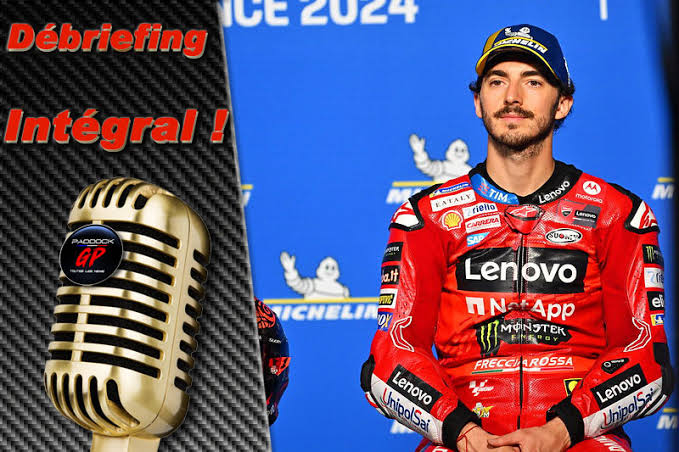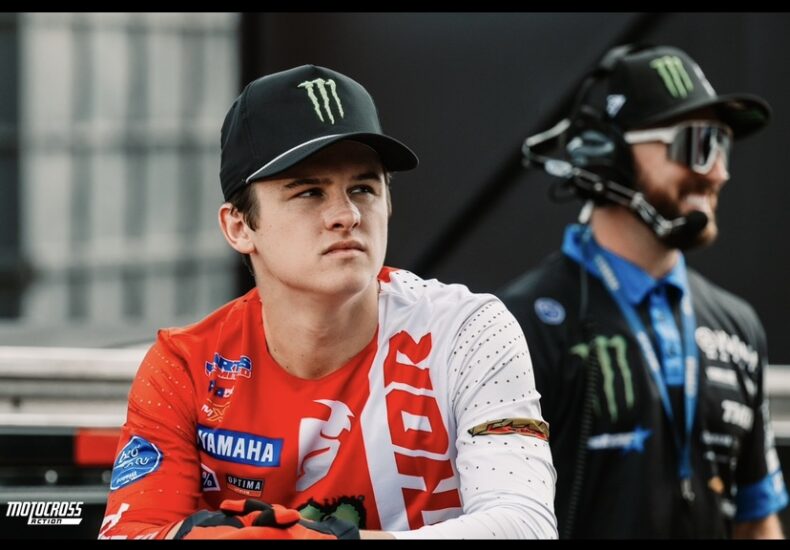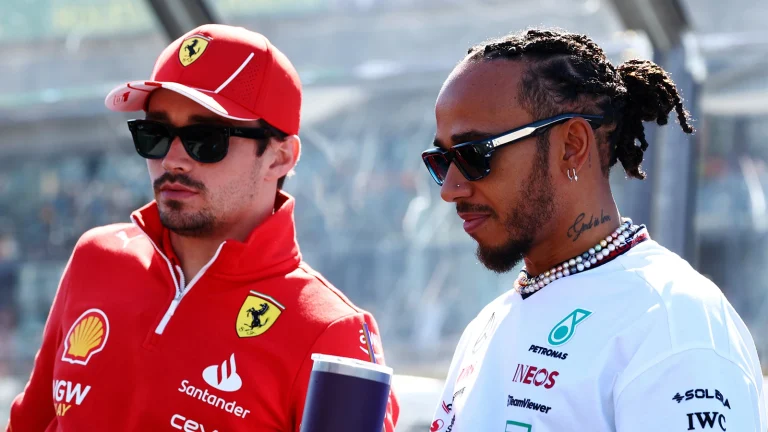
Liberty Media to Pay $210 Million Penalty in MotoGP Dispute: Francesco Bagnaia Speaks Out…
Liberty Media to Pay $210 Million Penalty in MotoGP Dispute: Francesco Bagnaia Speaks Out…

Why the ‘Moto2-like’ Gresini MotoGP Team Was So Important to Marc Márquez Marc Márquez, one of the most successful and celebrated riders in MotoGP history, has seen his career evolve through various stages, with each step marking a new chapter in his pursuit of glory. A pivotal moment in this journey was his collaboration with the Gresini Racing MotoGP team, a partnership that has been crucial in shaping his development and success in the premier class. This collaboration, which started in 2021, was often described as a “Moto2-like” setup, a reference to the team’s connection with his formative years in the intermediate class. Understanding why this environment was so important to Márquez requires a deeper look at his career and the key factors that made Gresini’s structure a significant part of his trajectory. The Moto2 Foundation Before making his leap to MotoGP in 2013, Marc Márquez spent his time in Moto2, where he honed the skills and strategies that would define his future success. Gresini Racing, a team with a deep-rooted history in Moto2 and MotoGP, played a vital role in his early career, first through a partnership in the lower classes and later with his transition to the top tier. The close-knit, family-like atmosphere of Gresini Racing allowed Márquez to feel comfortable and supported, even as he faced the immense pressures of elite-level racing. The team’s setup in Moto2 was characterized by a strong, direct relationship between the rider and the mechanics, fostering an environment that was less corporate and more rider-focused. As Márquez moved to MotoGP, his connection to Gresini Racing and their “Moto2-like” approach was essential. Unlike the larger, more corporate structures of factory teams, Gresini provided a more flexible and intimate environment. This environment allowed Márquez to maintain the close relationships he had developed during his Moto2 days, enabling him to focus on his performance rather than getting lost in the complexities of managing a larger team. The team’s more agile and less bureaucratic nature mirrored the dynamic, hands-on approach he had thrived in during his Moto2 career, which was key to him feeling at ease in a new and challenging environment. A Key Role in Márquez’s Recovery Another reason why the Gresini MotoGP team became so important was its role during Márquez’s recovery from a series of serious injuries, particularly the arm injury that sidelined him for much of the 2020 season. During this period, Márquez needed a supportive environment that allowed him to gradually return to competitive racing. Gresini, under the stewardship of Fausto Gresini, created a setting where he could work at his own pace and rebuild his confidence. The relaxed yet professional atmosphere allowed him to recover mentally and physically, ultimately leading to his comeback. The Moto2-like structure of Gresini Racing played a crucial role in simplifying the complex and often intimidating world of MotoGP. It allowed Márquez to focus on refining his technique and regaining his former glory without the added pressure of managing extensive team politics or logistical challenges. The smaller, more tightly-knit team dynamic helped him maintain a balance between recovery and competitive drive. Success in the 2021 and 2022 Seasons Márquez’s results with Gresini, particularly his consistency and competitive spirit, proved that the team’s environment helped him overcome the challenges posed by his injuries. Although Gresini was not a factory Honda team, it still had strong links to Honda, with Márquez able to continue using the same motorcycles and technical support. The team’s approach to racing, prioritizing rider comfort and allowing for a more personalized development process, gave Márquez the freedom to express himself on track, which is crucial to his riding style. In the 2021 season, Márquez showed his resilience by securing podium finishes and even race wins, which was a testament to the value of the Moto2-like setup. The Gresini team’s focus on technical consistency and rider comfort played a significant role in helping Márquez regain confidence and start winning again. His ability to adjust to this setup and take full advantage of his skills was a major factor in his comeback story. Conclusion The ‘Moto2-like’ atmosphere of the Gresini MotoGP team proved to be an important factor in Marc Márquez’s development as a rider, particularly during a challenging time in his career. By providing a supportive, intimate, and flexible environment, Gresini allowed Márquez to transition smoothly back into MotoGP after a series of devastating injuries. The connection to his formative years in Moto2, where he thrived in a similar setup, was crucial in maintaining his focus and performance. The success of this partnership highlights the importance of the team-rider relationship and how a rider’s comfort can greatly influence their success in MotoGP…
Why the ‘Moto2-like’ Gresini MotoGP Team Was So Important to Marc Márquez
Marc Márquez, one of the most successful and celebrated riders in MotoGP history, has seen his career evolve through various stages, with each step marking a new chapter in his pursuit of glory. A pivotal moment in this journey was his collaboration with the Gresini Racing MotoGP team, a partnership that has been crucial in shaping his development and success in the premier class. This collaboration, which started in 2021, was often described as a “Moto2-like” setup, a reference to the team’s connection with his formative years in the intermediate class. Understanding why this environment was so important to Márquez requires a deeper look at his career and the key factors that made Gresini’s structure a significant part of his trajectory.
The Moto2 Foundation
Before making his leap to MotoGP in 2013, Marc Márquez spent his time in Moto2, where he honed the skills and strategies that would define his future success. Gresini Racing, a team with a deep-rooted history in Moto2 and MotoGP, played a vital role in his early career, first through a partnership in the lower classes and later with his transition to the top tier. The close-knit, family-like atmosphere of Gresini Racing allowed Márquez to feel comfortable and supported, even as he faced the immense pressures of elite-level racing. The team’s setup in Moto2 was characterized by a strong, direct relationship between the rider and the mechanics, fostering an environment that was less corporate and more rider-focused.
As Márquez moved to MotoGP, his connection to Gresini Racing and their “Moto2-like” approach was essential. Unlike the larger, more corporate structures of factory teams, Gresini provided a more flexible and intimate environment. This environment allowed Márquez to maintain the close relationships he had developed during his Moto2 days, enabling him to focus on his performance rather than getting lost in the complexities of managing a larger team. The team’s more agile and less bureaucratic nature mirrored the dynamic, hands-on approach he had thrived in during his Moto2 career, which was key to him feeling at ease in a new and challenging environment.
A Key Role in Márquez’s Recovery
Another reason why the Gresini MotoGP team became so important was its role during Márquez’s recovery from a series of serious injuries, particularly the arm injury that sidelined him for much of the 2020 season. During this period, Márquez needed a supportive environment that allowed him to gradually return to competitive racing. Gresini, under the stewardship of Fausto Gresini, created a setting where he could work at his own pace and rebuild his confidence. The relaxed yet professional atmosphere allowed him to recover mentally and physically, ultimately leading to his comeback.
The Moto2-like structure of Gresini Racing played a crucial role in simplifying the complex and often intimidating world of MotoGP. It allowed Márquez to focus on refining his technique and regaining his former glory without the added pressure of managing extensive team politics or logistical challenges. The smaller, more tightly-knit team dynamic helped him maintain a balance between recovery and competitive drive.
Success in the 2021 and 2022 Seasons
Márquez’s results with Gresini, particularly his consistency and competitive spirit, proved that the team’s environment helped him overcome the challenges posed by his injuries. Although Gresini was not a factory Honda team, it still had strong links to Honda, with Márquez able to continue using the same motorcycles and technical support. The team’s approach to racing, prioritizing rider comfort and allowing for a more personalized development process, gave Márquez the freedom to express himself on track, which is crucial to his riding style.
In the 2021 season, Márquez showed his resilience by securing podium finishes and even race wins, which was a testament to the value of the Moto2-like setup. The Gresini team’s focus on technical consistency and rider comfort played a significant role in helping Márquez regain confidence and start winning again. His ability to adjust to this setup and take full advantage of his skills was a major factor in his comeback story.
Conclusion
Why the ‘Moto2-like’ Gresini MotoGP Team Was So Important to Marc Márquez…

Why Eli Tomac Races with the Number 17: The Story Behind the Choice
Why Eli Tomac Races with the Number 17: The Story Behind the Choice

Haiden Deegan Celebrates a Stellar Year with New Audi Acquisition
Haiden Deegan Celebrates a Stellar Year with New Audi Acquisition

Haiden’s speaks on reason riding behind the number Journey from Amateur NO 38 to Permanent Career Number 238
Haiden’s speaks on reason riding behind the number Journey from Amateur NO 38 to Permanent Career Number 238

Sail from Raby Bay to Sydney: A Unique Opportunity for Adventure…
Sail from Raby Bay to Sydney: A Unique Opportunity for Adventure…

Ferrari: Charles Leclerc, Lewis Hamilton Competition ‘A Good Issue’ to Manage…
Ferrari: Charles Leclerc, Lewis Hamilton Competition ‘A Good Issue’ to Manage…